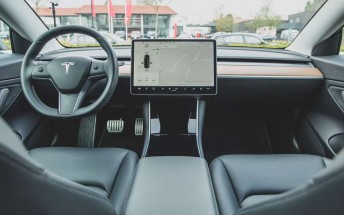Sunday debate: Buttons vs Gestures

As Android P introduces new iPhone X-like gestures, in this weeks Sunday Debate we deliberate which are better - hardware buttons or gestures?

Paul: "Buttons still have their place"
When it comes to this particular topic, I'm conflicted. In reality, I like, appreciate and use gestures on a daily basis that are implemented well and 'feel right' without slowing me down by distracting me or demanding too much of my attention.
Android P with its Digital Wellbeing Dashboard will inform us how many times we unlock our phones on a daily basis which will make for compelling reading. The last study I saw stated that on average we check our phones 80 times a day!
My point being is that during those 80 interactions, I would estimate that at least 80% of those involved gestures to swipe on notifications, access our cameras, quick change settings and access search, while pinch to zoom feels like it was always a part of our lives. On larger devices, such as iPad, I consistently use 4 or 5 finger gestures to multi-task or swipe between apps.
The reason I use the above gestures without thinking is that they're intuitive. In essence, they're Macro gestures, in that, you don't have to be that accurate in the placement of your finger or thumb on a particular target area to use them.
First blood to gestures, so why conflicted? I'm not alone in wanting the maximum possible display size, with the smallest physical footprint. Where I start to feel conflicted is that the 'home' buttons on our smartphones are being removed and substituted with single or multiple gestures.
It's a highlight when a fragile physical part can be replaced freeing up valuable space for screen and battery. Yet challenging, when multiple gestures forced upon us don't act as an acceptable substitute. Often requiring too much of a concerted effort, that draws focus to use right first time every time.
Compared to the Macro gestures that I described earlier, these Micro gestures require a far greater level of involvement to use. Especially those that perform multiple actions dependent on how far you go with the gesture or having to pause during the gesture.
My final point is that life is tactile, Phones without buttons feel 'soulless.' We use this sensory feedback to orientate ourselves every minute of the day. Often picking up our devices, we use these tactile 'landmarks' to orientate our devices when we pick them up or pull them out of our pockets. Let's not lose sight of that; some things are perfectly fit for purpose. In the past, I've made a few cockups in this area.
This is the guy who replaced all his light switches in his house with great looking 'Star Trek'esc touch-sensitive black glass switches and dimmers. Disaster! The once simple task of going to the bathroom in the middle of the night, reaching and flicking a switch, became a total nightmare. Family revolt soon put paid to that.

The Lenovo Yoga Book's touch sensitive keyboard
In a similar vein, I'm also probably the only guy who purchased the Lenovo Yoga Book, a device that was greatly portable and was innovative for my drawings and sketches. The touch-sensitive keyboard was resentable, with my typing speed going from being measured in 'words per minute' to 'words per hour'.
I'm fine with removing buttons if the substitute is as good as or better than the original, which is often not the case. I also genuinely hope we don't see the day where our volume and power buttons are either replaced with touch-sensitive versions or in some instances removed altogether, all in the name of waterproofing or size.
So, while that's not the "buttons rule forever" argument you may have been expecting, I did my best to show why rushing to remove buttons is a bad idea. We'll get there one day, we just aren't there yet.

Ivan: "I agree."
This may be the easiest Sunday debate I’ve ever had the pleasure of participating in. Or the weirdest. I agree with Paul. Buttons still have their place and I believe they’ll have their place for awhile yet. And gestures are great, when they’re useful and intuitive.
So, should we go for a beer or something? Oh, we need to have some form of an argument. Okay then.
If we’re to strip the issue down to removing buttons and replacing their functionality with gestures, then the iPhone X is the best place to look. Apple removed the home button and implemented a few gestures into iOS. As a former OS X user and former aspiring iPad owner, I loved the idea.
Gestures make a touch device much more intuitive to use, once you get over the missing button. And let’s call a spade a spade - most people that miss the iPhone’s home button are simply expressing their irritation with change. That button became obsolete a long time ago.

Apple’s gestures are fluid and enjoyable. Not all of the new gestures on the iPhone X make sense, I’ll concede, but for the most part using an iPhone X has made me look at Android differently. It’s reliability on pinpointing software buttons with the tip of a finger is analog and unintuitive. And Google agrees with me.
Android P shows that Google is embracing the gestures, and it makes me happy because I no longer feel like I can’t switch back to Android. It means that UIs will be operated mainly with gestures. And for the first time ever, both iPhones and Androids will be navigated in much the same way. But Google needs to get the Android P gestures right. We’ll need to wait and see if it does.
Let’s move away from smartphones for a bit and look at PCs. Microsoft, like Google, looked at Apple to learn how to use gestures on its PCs. Windows 8 and subsequently 10 brought almost identical gestures to OS X. I especially love the three-finger swipe to show all open apps, which in the latest Windows is called Timeline, and was called Mission Control when I was a Mac user.
The tech world is embracing gestures - from touchscreen phones to laptops - and it does because it makes sense. On phones, screens are eating away bezels and buttons both and it’s only logical for us to embrace it and start gesturing to the digital interface to do what we want. Expecting an old-fashioned hardware button to be intuitive on a digital canvas is illogical.
So let me borrow a snippet of Paul’s musings - “...I like, appreciate and use gestures...that are implemented well and ‘feel right’...” - so just make the gestures count. Make them useful and intuitive. Make them ‘feeling right’.
I believe gestures are the immediate future, at least until we find a way to use devices with our minds. And I hope Android P does gestures justice. Android users deserve the level of fluidity iPhone X users have.
Until then, I’ll just enjoy using my fluid and gesture-friendly iPhone X. But I’ll give Google a few months and I’ll check back in when the Pixel 3 rolls around.
Cast your votes
Time to cast your votes - do you prefer hardware buttons or gestures?
Related
Reader comments
- Carol
- 21 May 2018
- L7b
Actually that would be nokia n9 with meego, 7 years ago.
- mNiosu
- 21 May 2018
- ajf
Also the OnePlus way: you have 3 options: gestures, screen buttons and screen buttons with auto-hide function.
- mNiosu
- 21 May 2018
- ajf
The OnePlus version since Oreo Beta on 5T is the best. Easy and intuitive and saves screen space. I used to be addicted to capacitive buttons in my Samsung days but since I switched to gestures on my 5T it seems impossible for me to go back to button...








 Huawei
Huawei Samsung
Samsung Samsung
Samsung Apple
Apple Xiaomi
Xiaomi


